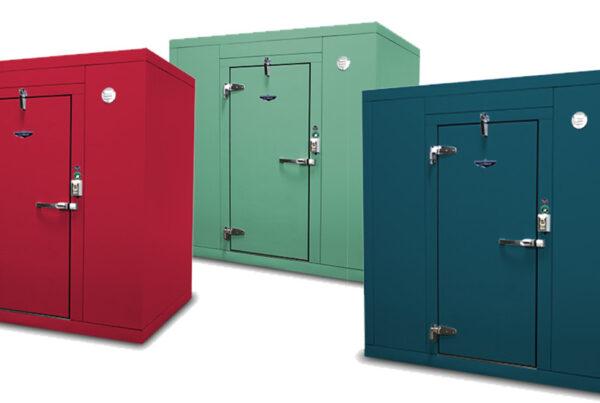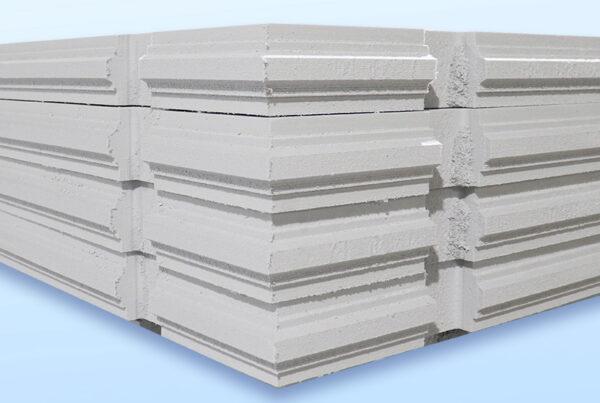Recently, there has been a document circulating in the industry that has a lot of misinformation concerning the use of extruded polystyrene insulation and its compliance with the Energy Independence Security Act of 2007.
We normally ignore incorrect information that is generated with the sole purpose of discrediting a competitor but the severity of this document begs to be clarified.
The document can be found by clicking the pdf icon.![]()

Extruded Polystyrene Panels
First, there are presently two types of foam insulations being used in the manufacture of walk-in coolers and freezers in the United States. These insulations are Extruded Polystyrene and Foamed –in –Place Polyurethane insulation. Many companies in North America have the ability to use both types of these insulations. Both insulations have benefits that can be used to provide a quality walk-in cooler or freezer. Companies that use both types of insulation can apply each of these insulations in parts of a walk-in that they perform best and therefore bring the best designed quality walk-in cooler or freezer to the marketplace. Some companies do not have the capability and therefore turn to attacking the insulations they do not have the ability to use with misleading information to compensate for this deficiency. This situation seems to be one of them. There are six points that need to be addressed.
1. In the new EISA regulations it states walk-in coolers shall have ceiling wall and door r-values of 25 at 55° average foam temperature and freezers have r-values of 32 at 20° average foam temperature. Freezer floors shall have an r-value of 28. See attached EISA law document H.R. 6-7 section 1, paragraphs (C) and (D). It does not say that this is an aged r-value. All manufactures are using fresh r-values to meet the new regulations. When using the aged r-values neither Foamed-in-Place Polyurethane or Extruded Polystyrene can meet the new EISA law in a 4” wall. When the DOE publishes its new regulations for testing insulations to go into effect in 2012 it is planning to take into consideration aged r-values. Then both insulation types will be tested with the same test to meet approval. We believe this will show which insulation is best for walls, ceilings and floors.
2. The above document states that Foamed-in-Place Polyurethane is a superior insulation without any scientific evidence to back it up.
3. The above document states that electrical boxes are better installed inside the panel for a cleaner look. Under the new EISA law the only time walls, ceiling, doors or floors can have a lower r-value is when structural members are installed inside the panel to add strength to the panel. Since adding conduit and electrical boxes inside the panel reduces strength and r-value of the panel, these items installed inside the panel would be non-compliant under the new regulations. Surface mounted electrical also has an advantage in allowing the electrical wiring to be easily accessible for field code approval and access in the field.
4. It states that Foamed-in Place Polyurethane panels offer much more design flexibility due to the fact that Extruded Polystyrene panels are limited to the sizes available of the board-stock. Actually, board stock is available in many sizes and lengths. Board stock foam panels are so easy to customize that many manufactures that use XPS do not charge extra for custom walk-ins like many Foamed-in-Place manufactures do. Foamed-in-Place panels are foamed in fixtures that are hard to change and add cost to the product.
5. Extruded Polystyrene is laminated to the metal skins with polyurethane laminating material which has the same or better adhering characteristics as the polyurethane foam.
6. Extruded Polystyrene insulation has been in the construction industry for decades and has proven itself as a great performer when strength, water resistance and insulating properties are required. You will never find a construction company or architect insulating a concrete floor with polyurethane insulation. Even when a walk-in is installed on a concrete floor the installer will use Extruded Polystyrene insulation under the floor to insulate it. Have you ever wondered why they don’t use polyurethane insulation?




Nice post,Thanks for share.